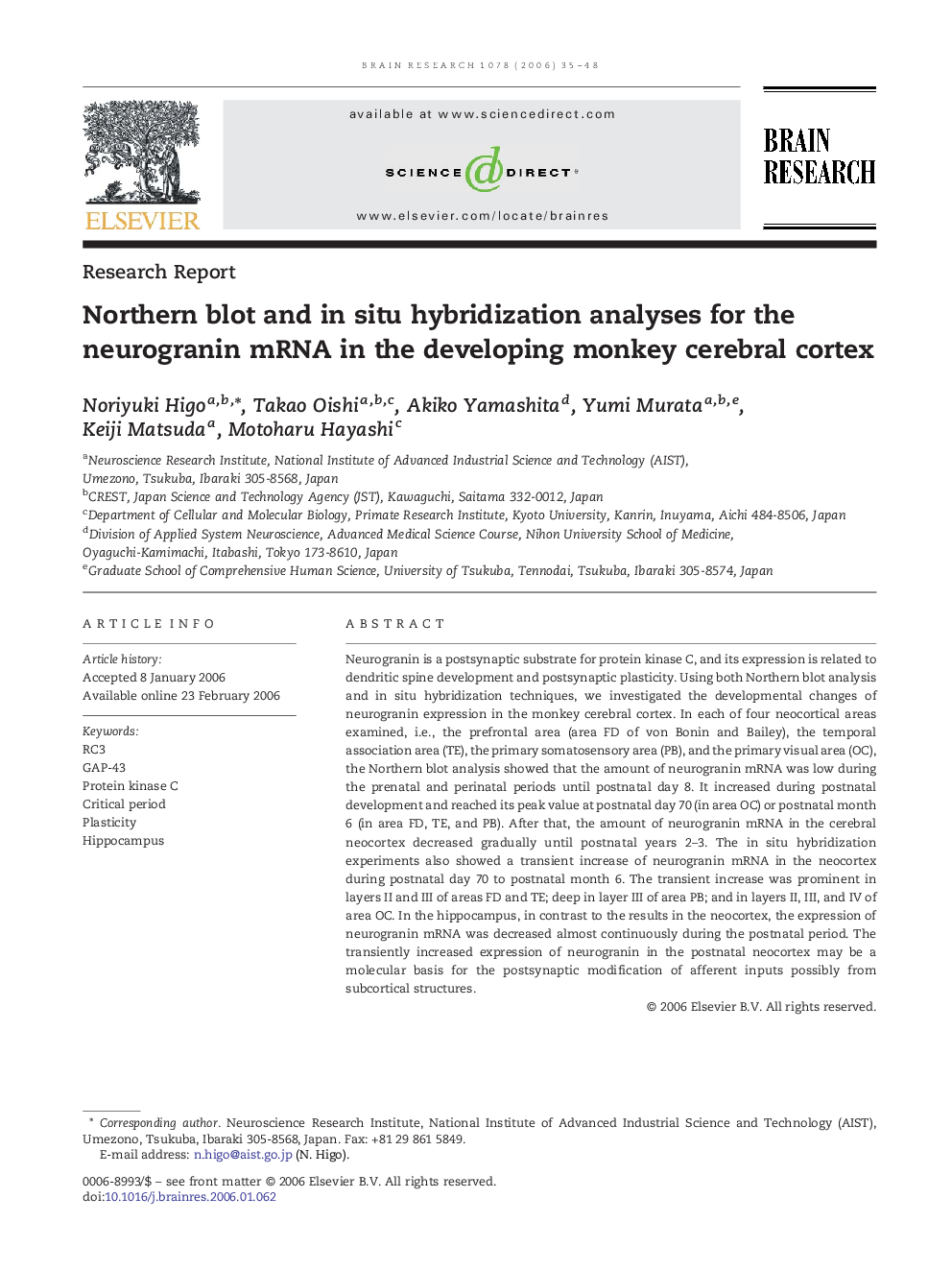| Article ID | Journal | Published Year | Pages | File Type |
|---|---|---|---|---|
| 4333255 | Brain Research | 2006 | 14 Pages |
Neurogranin is a postsynaptic substrate for protein kinase C, and its expression is related to dendritic spine development and postsynaptic plasticity. Using both Northern blot analysis and in situ hybridization techniques, we investigated the developmental changes of neurogranin expression in the monkey cerebral cortex. In each of four neocortical areas examined, i.e., the prefrontal area (area FD of von Bonin and Bailey), the temporal association area (TE), the primary somatosensory area (PB), and the primary visual area (OC), the Northern blot analysis showed that the amount of neurogranin mRNA was low during the prenatal and perinatal periods until postnatal day 8. It increased during postnatal development and reached its peak value at postnatal day 70 (in area OC) or postnatal month 6 (in area FD, TE, and PB). After that, the amount of neurogranin mRNA in the cerebral neocortex decreased gradually until postnatal years 2–3. The in situ hybridization experiments also showed a transient increase of neurogranin mRNA in the neocortex during postnatal day 70 to postnatal month 6. The transient increase was prominent in layers II and III of areas FD and TE; deep in layer III of area PB; and in layers II, III, and IV of area OC. In the hippocampus, in contrast to the results in the neocortex, the expression of neurogranin mRNA was decreased almost continuously during the postnatal period. The transiently increased expression of neurogranin in the postnatal neocortex may be a molecular basis for the postsynaptic modification of afferent inputs possibly from subcortical structures.
